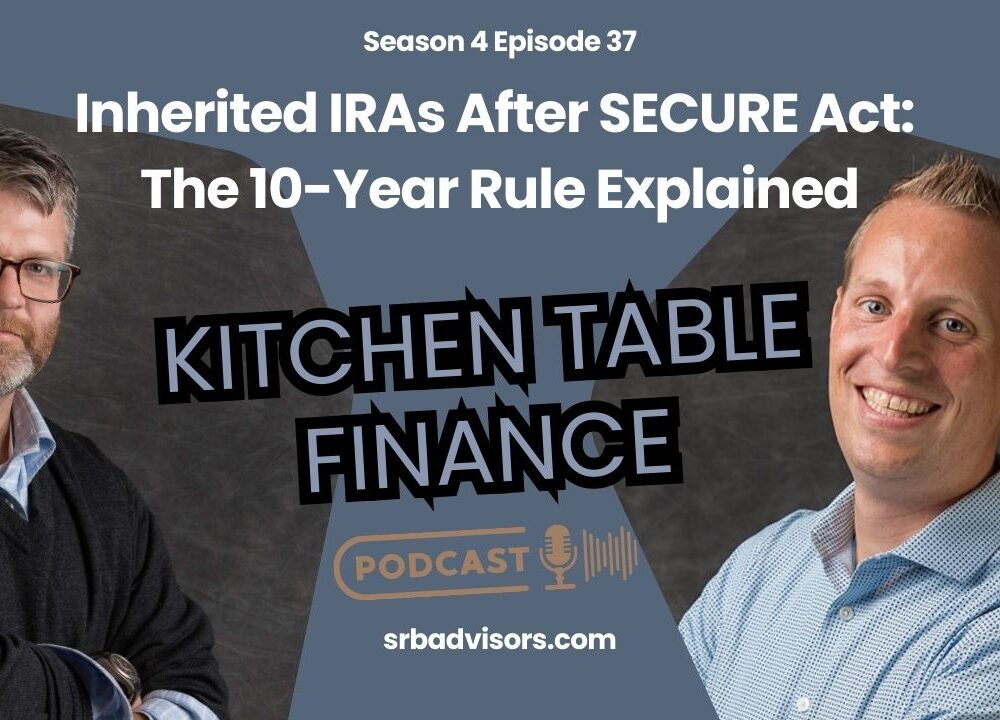Charitable Giving Strategies

Podcast: Play in new window | Download
For many of our clients, charitable giving is an important part of financial planning. Supporting causes in which you believe can be a very rewarding goal. Traditionally, the tax code has supported charitable giving and encouraged Americans to be generous with their support of non-profit organizations. The tax law changed in 2018, increasing the standard deduction. This has made it more difficult for many middle-class Americans to get a tax benefit for supporting charities.
Itemized Tax Deductions
Your itemized tax deductions include things like property taxes, interest on qualifying mortgages, along with charitable gifting. If these don’t total more than the standard deduction, it can be difficult to get a tax benefit from making donations. However, with a little planning, there are some techniques that you can use to get some of those tax benefits back.
Note: With all these strategies, there may be deduction limits based on income and other considerations. Always consult your financial planner and tax advisor prior to implementing any tax strategy.
Non-Itemized Deductions
First, new changes to the tax code allow for some charitable deductions without having to itemize. For 2020, taxpayers can deduct up to $300 in charitable giving per tax return. Starting in 2021, single taxpayers can deduct $300.Married couples filing joint returns can deduct $600 a year in charitable donations. You can use these deductions regardless of whether you use the standard deduction or not. Be sure to document your giving with receipts from qualified non-profits.
Group Your Charity Giving Donations
Second, if you have savings available and a long-term plan for gifting, you can group contributions that you might normally spread out over multiple years into a single year This way, your donation, together with other deductions, is more than the standard deduction.
For instance, if you are a single taxpayer the standard deduction for 2021 is $12,550. If you have taxes, interest, and other deductions totaling $10,000 and make a $2000 contribution to your church, the contribution doesn’t give you any tax benefit because your total deductions ($12,000). This is still less than the standard deduction ($12,550). But if that $2,000 is something you plan to gift annually, and you have the funds in savings, you could gift $6000 this year, raising your deductions to $16,000 and allowing you to take a larger deduction than the standard.
Qualified Charitable Distributions from an IRA
A third technique that has become popular for retirees is to make Qualified Charitable Distributions from an IRA. If you are over 70 ½ years old, you can make up to $100,000 per year in Qualified Charitable Distributions to certified non-profit organizations. To be a qualified charitable distribution, the IRA distribution check is made out to the charity rather than to the donor. Most custodians allow the check to be mailed to the donor to deliver to the organization. The checks can also be sent directly. Distributions from traditional IRAs usually count as income for tax purposes. However, Qualified Charitable Distributions are not treated as taxable income to the donor. This way, the donor gets a tax benefit regardless of whether they itemize their tax deductions. Furthermore, these distributions count toward the required minimum distributions.
Donate Shares of Appreciated Assets
If you are not able to make a qualified charitable distribution, another option is to donate shares of appreciated assets rather than cash. The donation amount itself can be deductible if you itemize. This technique also allows you to avoid capital gains tax on the asset you donate, regardless of itemization. If you sell an investment that has gone up in value, you are usually required to pay capital gains tax on the growth. But tax-exempt non-profits can sell appreciated assets without paying capital gains. Many non-profits, even small organizations, have an investment account set up to receive such gifts and can explain how to make a transfer of shares. By sending them shares instead of cash, they can make the sale and you can avoid the tax.
Donor-Advised Fund
A Donor-Advised Fund is a bit more complex but allows you to combine two of these techniques. A Donor Advised Fund is an investment account that you control in partnership with a non-profit foundation. The account lets you donate a sum to the account and take a tax deduction in the year of the contribution. The funds are invested and remain under your control. You can then make grants to the non-profits of your choice over time. This allows you to group several years’ worth of gifting into one year, potentially getting beyond the standard deduction.
You can also fund a Donor Advised Fund with appreciated assets, avoiding capital gains tax on those assets. There are minimums and rules for these types of accounts and a little research must be employed to make sure it is a good fit. However, they can be a very effective tool if you are charitably inclined.
The Wrap Up
There are several more sophisticated charitable giving strategies designed around estate planning, and usually involving trusts to remove assets from a large estate. Those strategies are important, but beyond the scope of this article. If you are interested in those strategies, drop us a line or check in with your estate planning attorney.
About Shotwell Rutter Baer
Shotwell Rutter Baer is proud to be an independent, fee-only registered investment advisory firm. This means that we are only compensated by our clients for our knowledge and guidance — not from commissions by selling financial products. Our only motivation is to help you achieve financial freedom and peace of mind. By structuring our business this way we believe that many of the conflicts of interest that plague the financial services industry are eliminated. We work for our clients, period.
Click here to learn about the Strategic Reliable Blueprint, our financial plan process for your future.
Call us at 517-321-4832 for financial and retirement investing advice.
Share post:
